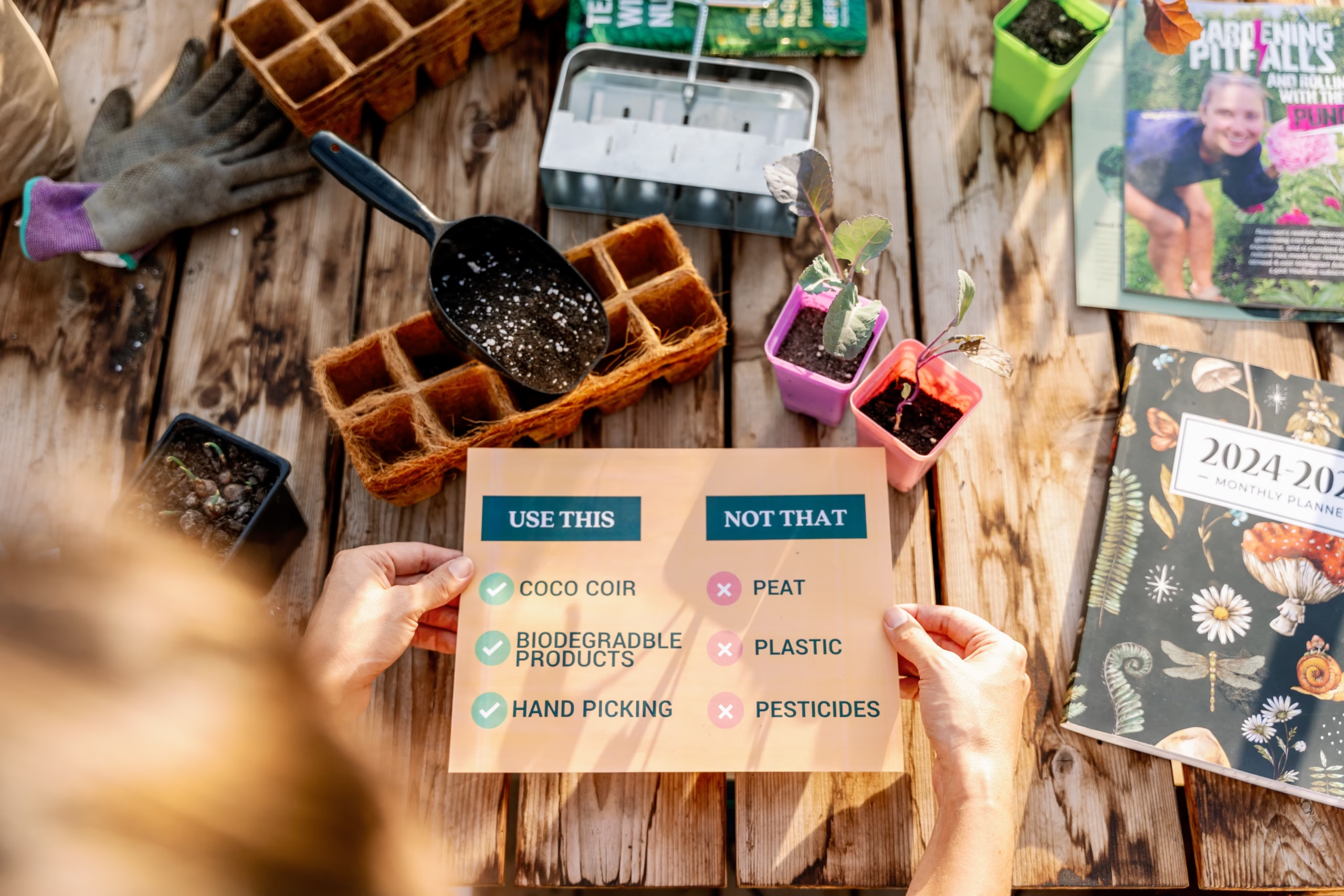

I love gardening in raised beds. It’s my preferred way of gardening, and how I’ve chosen to do it my entire growing career. In this article I am going to go over everything you need to know about raised bed gardening, from the different materials, to the heights, best practices and how to fill your garden with high quality soil on a budget. By the end of this article, you’ll know if raised bed gardening is for you.

This blog is reader supported. Some of the links in this article are affiliates which earn us a small commission, at no additional cost to you.
Raised garden beds are semi-permanent gardens that have been built above the ground and filled with soil. They’re different than containers because they are larger, and aren’t able to be moved around. Raised beds can be built out of wood, metal or plastic and can be anywhere from just 6 inches off the ground, often up to 32″ tall.

There are many reasons to choose raised garden beds over in ground or container gardens. The first is if you have bad soil in your yard (such as heavy clay), choosing to grow in a raised bed means you have control over the type of soil that you’re gardening with. The second, is if you have trouble crouching or bending down, raised gardens give you better accessibility to grow a garden. They are particularly useful if you garden in a wheelchair, or are more comfortable sitting while gardening. Finally, growing in a raised bed gives you more space to work with in comparison to growing in containers, and reduces the amount of watering because it won’t dry out as quickly as pots.

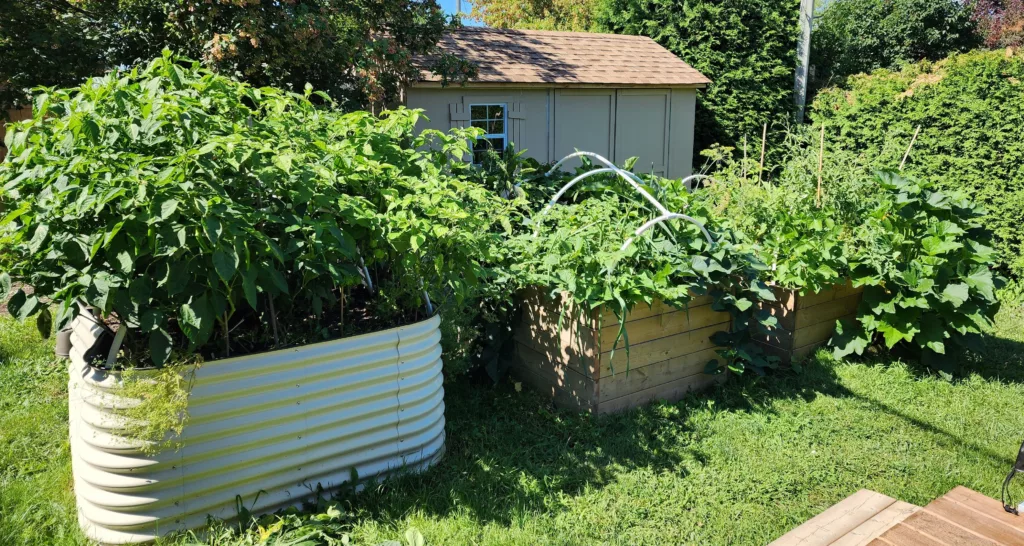
As mentioned above, there are three different types of raised beds. Wood, metal and plastic gardens exist and are available to purchase. All three types of gardens have a use and a place, it just depends on your garden goals.
Plastic raised beds are best if you’re only planting a small garden and are looking for an accessible shape or height for an affordable price. They also do a good job of retaining moisture if you live in a dry location. The downfall to plastic garden beds include; they warp out of shape with the weight of the soil and water (see photo below), they don’t provide good drainage if you live in a wet area, black plastic has been known to carry heavy chemicals in it that can leach into your soil.
Metal raised beds have become more popular in recent years because they are meant to last 20+ years in the garden, and also come in some fun shapes and colours. They’re also helpful for people who don’t have the skills or tools to build their own raised gardens out of wood. The downfall is that metal raised beds come with a high price tag. In my opinion, metal raised beds are perfect for people who want a specific aesthetic in their garden, whether it’s fancy shapes, nice colours or a matching garden. I own metal raised beds from both Sproutbox Garden and also from Raised Garden Beds. Both have held up well in my garden if this is the route you prefer to take! And as an extra bonus, they’re both Canadian companies.
The final type of raised bed garden is one made out of wood. This is my preferred way to make gardens because I have the tools and know-how to make them which makes them the most affordable and custom type of garden for me. If you’re gardening on an uneven piece of property, making your gardens out of wood allows you to build them on a slope without having to flatten your land. You can choose which height works best for you, what shape you want, and even what depth. The world is your oyster when it comes to making gardens out of wood. The only thing you need to choose is the type of wood that you intend to grow with. Most people will suggest making your gardens out of cedar because of how long lasting they are. Additionally, treated lumber in the past wasn’t considered safe for growing food in. However, the process for treating lumber has changed, and in my opinion, is safe to use for gardens. I leave this up to you to review and decide what is best for you. The two downfalls of wood beds is that, first they will rot at some point (although this can easily take 10 years), and they require you to have knowledge on how to build.
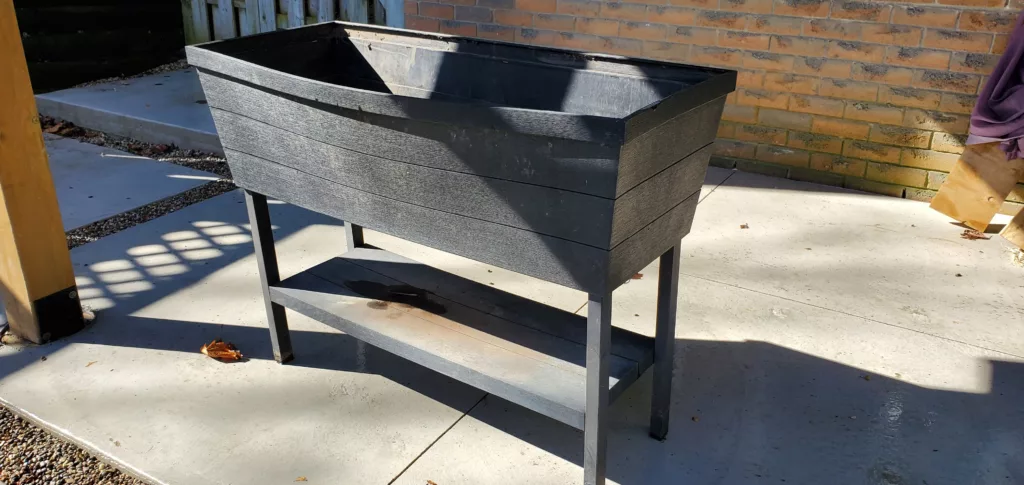
One of the biggest benefits of raised bed gardening is how it allows gardeners with accessibility needs to be able to grow food. Whether you use a wheelchair, can’t bend over, or have trouble lifting heavy items like pots, raised bed gardening can help you out. It’s important that everyone can grow a garden if they want to, and raised beds allow this to happen for many people who may not have thought gardening was possible.
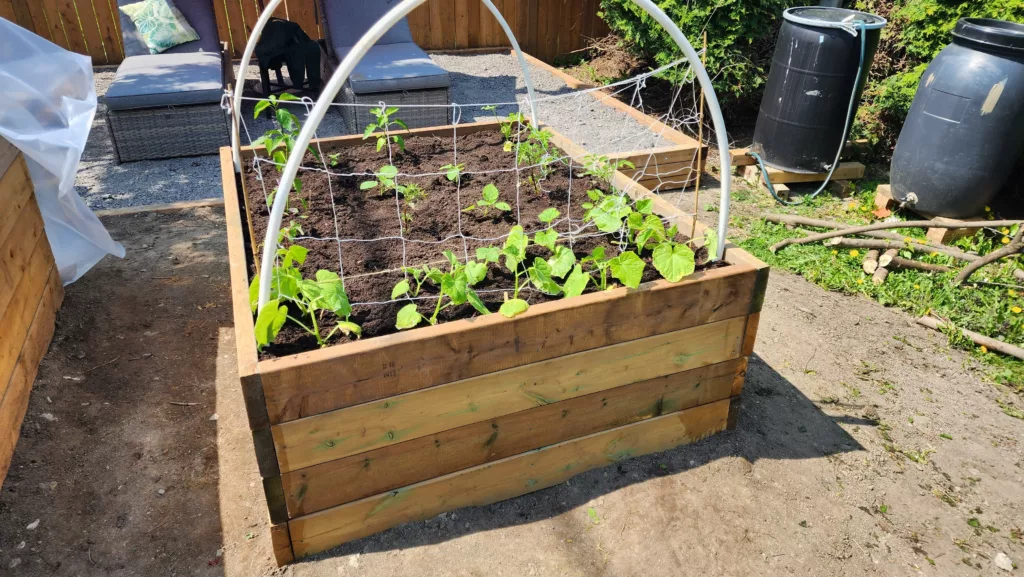
I covered most of this above in an earlier section, but the main point I wanted to talk about was why you may choose to make your own wooden garden or choose to buy a metal raised bed.
DIY wood gardens are fun to make, are often cheaper than metal raised beds and are fully customizable. However, in order to make your own raised beds you need quite a few tools (or some help from your local lumber store). You also need to be interested in creating your own garden, when sometimes out of the box gardens are more enjoyable to invest in.
Metal raised beds are great because they’re meant to last you a lifetime. They also come in some fun colours and shapes. They’re straight forward to build and can be done alone, without a second set of hands. The biggest downfall is that they are expensive. But if you’re looking for a specific aesthetic, they can be the right choice.
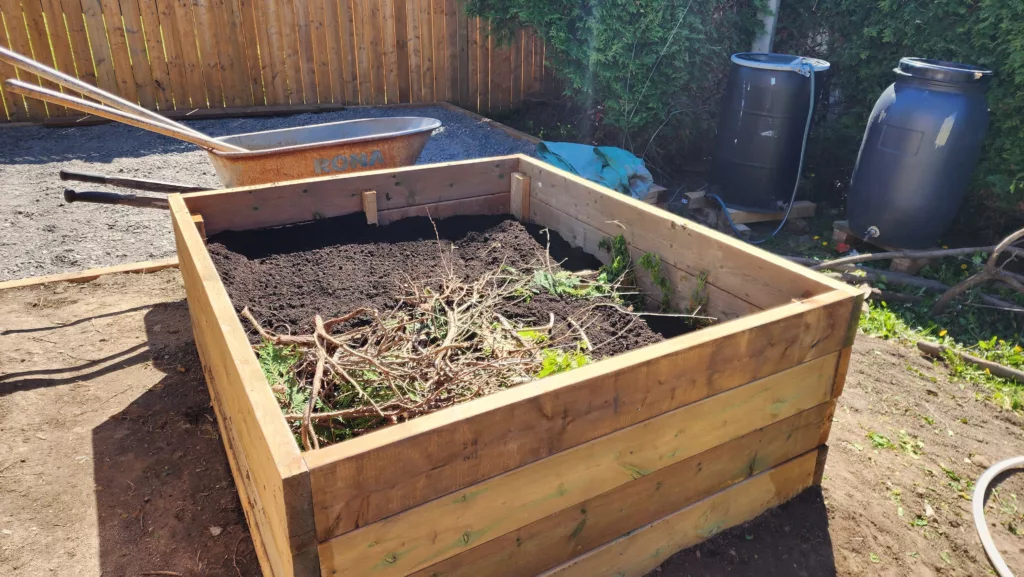
Unless your raised bed is small (like the plastic one pictured above) or is low to the ground (like the gardens pictured below), you’re going to want to collect some branches and stumps for your garden. If you own a tall raised bed, it would be SO expensive to fill it with 100% soil, and it also is unnecessary. Filling your raised beds with leaves, sticks and stumps is part of the Hügelkultur method (although it’s not exactly the same) but this helps fill up your raised bed in a more affordable way. Plus, as the branches break down, they help feed the soil. Generally, I will fill at least 2/3 of my garden with sticks, stumps and other garden debris. Just be mindful not to use black walnut because it produces a chemical called juglone that is toxic to some plants. Once my garden is 2/3 to 3/4 full I fill the remainder of the garden with good quality garden soil.

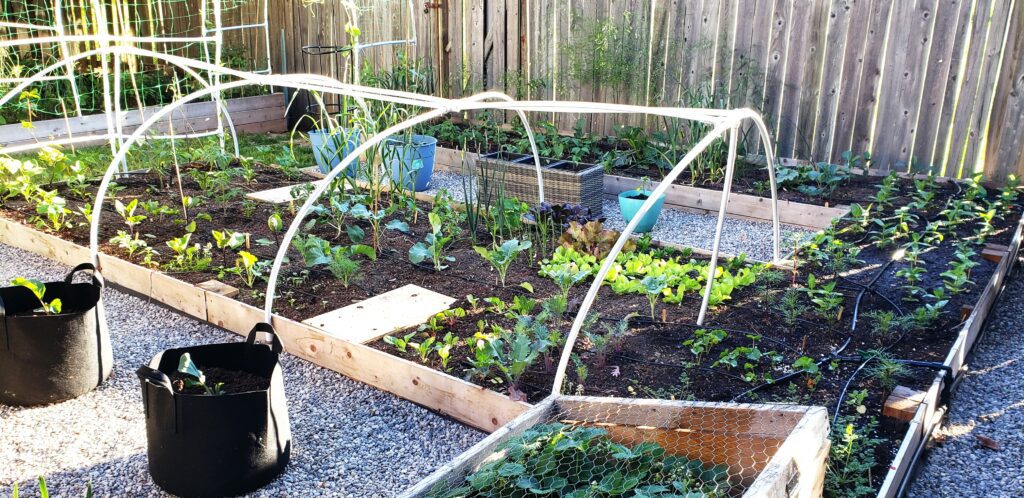
There are a few items you want to take into consideration, whether you’re building or buying a raised bed. The first is that you want to consider the height of your plants when thinking about the height of your raised bed. For example, if you buy or build a 32″ raised bed, growing items like corn, tomatoes or cucumbers can make it difficult to maintain and harvest.
The next is if you plan to build a low raised bed, like the photo above, you’ll need to know the type of soil you have already existing in your yard, and what the drainage is like. If you have heavy clay, you’ll likely need to dig down 12-24″ so that you can fill it back up with quality soil. If you don’t do this, and only make a garden that is 5-6″ in height with clay below it, you can have issues with your plants and drainage.
Finally, you don’t want to buy or build a garden that is too wide. In the photo above, the middle garden is 6 feet wide – which I thought would be okay since I have access from two sides, however we really can only comfortably reach about 2 feet infront of us, which made the inner 2 feet of the garden difficult to maintain. Same for my white metal raised bed photographed above. This garden is built in a 5×5 configuration, and again that middle foot is really difficult to reach, especially at the 32″ height. It’s best to make sure that you can access your garden within 1.5-2′ in all directions and never make it wider.

Gardening Advice for Short Season Gardeners
Privacy Policy • Terms and Conditions
© 2025 by Urban Gardening Canada